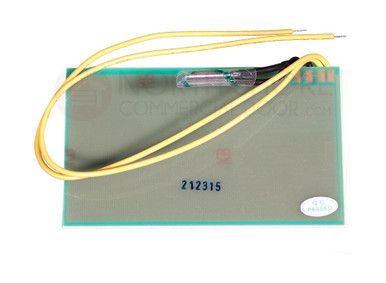richxd87
Observer
RELiON makes a "Low Temp" Battery with safe charging down to -4F. Is it worth the additional cost?
https://relionbattery.com/low-temperature-series-line
https://relionbattery.com/low-temperature-series-line
Heat stress is just as bad as cold stress for Lithium
Make sure there is an air gap between the heat source and the batteries.


 www.northshorecommercialdoor.com
www.northshorecommercialdoor.com
Seems like cycling a load on a timer or thermostat (probe at battery) and insulating the battery would be the simplest & safest way to warm it up for charging. That would also allow the battery to somewhat manage the temperature with its on-board system, rather than relying on external heaters & timers that can't communicate with the battery.Your still welcome to pull load off your battery if its below freezing, just not charge it.. if I kick my 1200VA inverter on and boil some water the battery would likely warm up enough that it could start taking a charge afterwords.
My LFP sat in my camper all winter @ 40% SOC with charger/loads disconnected, no need to take it out.. it should be fine in that state.
What you're talking about is implicit in the battery thermal management algorithms for EVs and stand-by systems. The reason I suspect it's not a standard feature here is it does consume quite a bit of energy and it's not really critical if all you're doing is discharging. In an EV the batteries have to be prepared to accept a charge pretty quickly because of regeneration or that perhaps you might at any time plug in or drive straight to a charging station. If you are fully in control of the both charge and load then manually starting a battery warming or just relying on discharging before charging is fine and doesn't waste energy unnecessarily. Tesla or whomever had to assume you have parked your car outside all night and warming 7,000 cells from their design limit of -30°F to +32°F takes a lot of time, so they have to balance not letting the pack get too cold against how much range it consumes in a parked shut-down state. If you're using a lithium battery to run your RV house you might or might not need to burn whatever, say 20 watts, constantly overnight if you know first thing in the morning you're going to turn on lights and make coffee before the solar kicks in.Seems like cycling a load on a timer or thermostat (probe at battery) and insulating the battery would be the simplest & safest way to warm it up for charging. That would also allow the battery to somewhat manage the temperature with its on-board system, rather than relying on external heaters & timers that can't communicate with the battery.
I'm surprised battery manufacturers don't sell warming blankets that can be controlled by the battery's management system.
